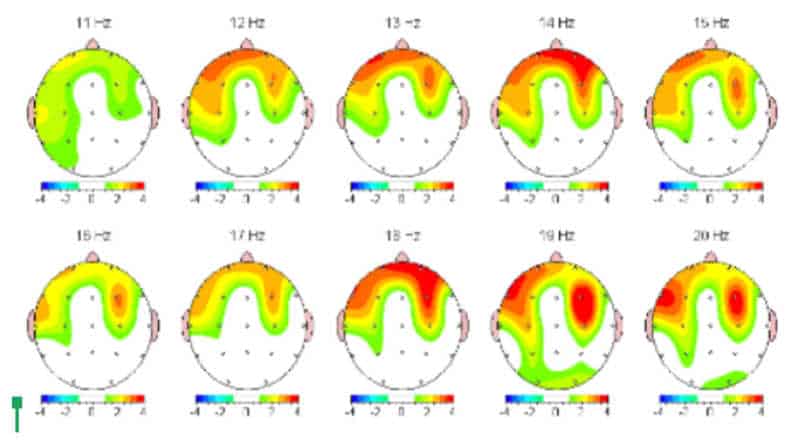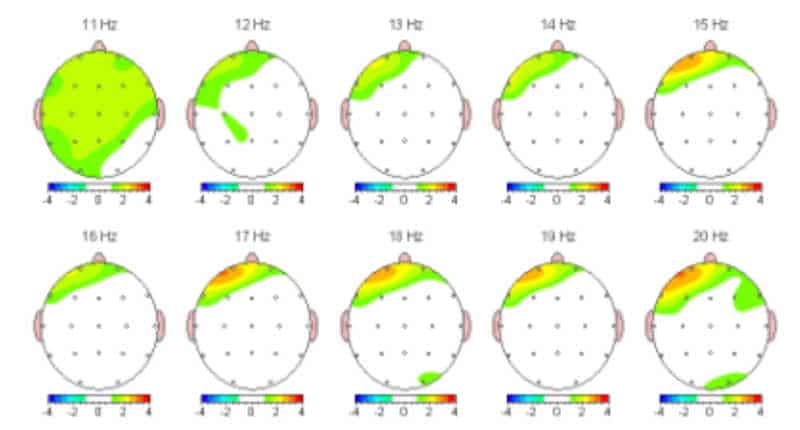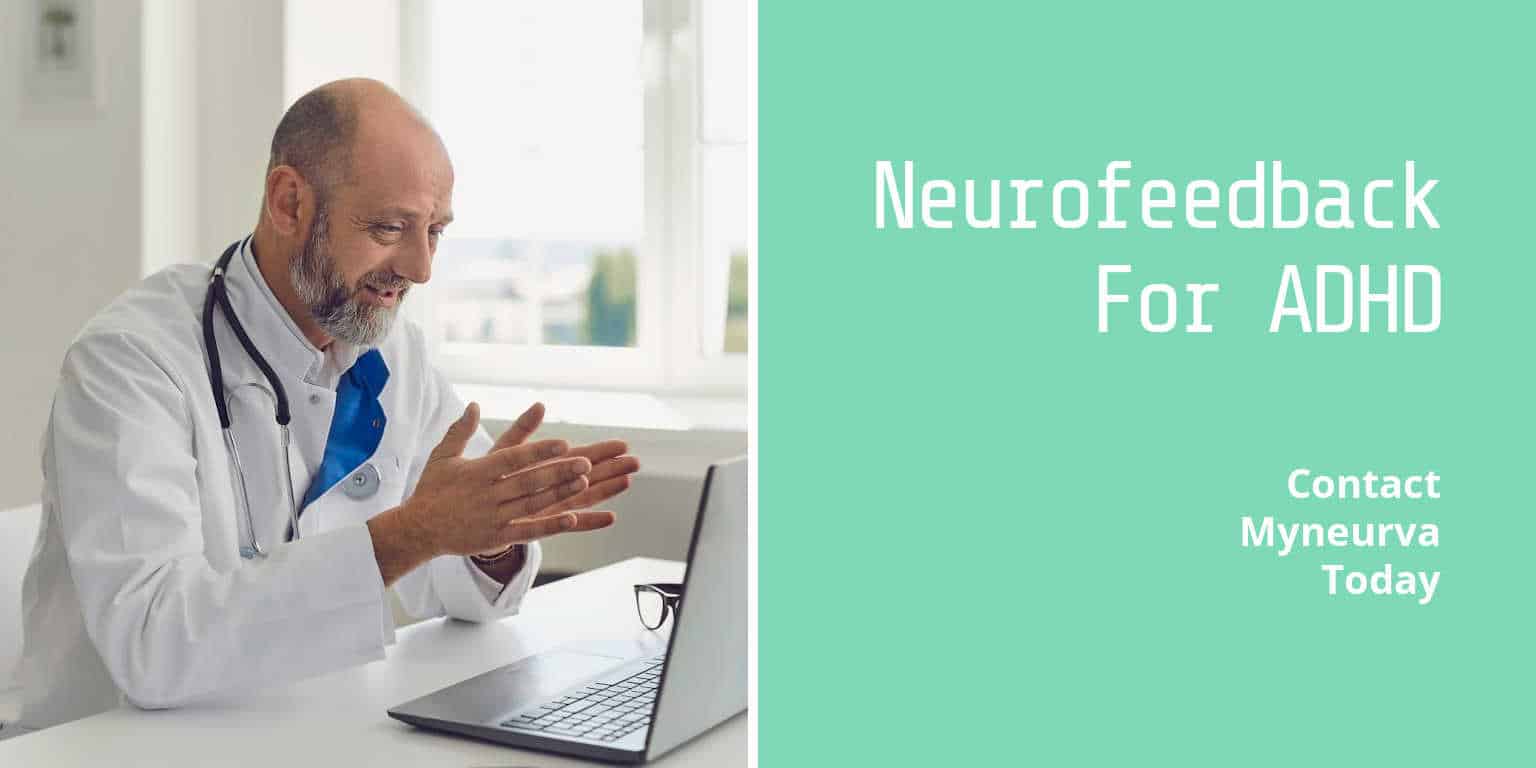Neurofeedback For ADHD
Neurofeedback For ADHD can help you learn to pay attention for longer periods of time, have less impulsive speech or behavior and to sit still when desired
Table Of Contents
- Can Neurofeedback Help ADHD
- Can Neurofeedback Cure ADHD
- Can I Do Neurofeedback For ADHD At Home
- What Is ADHD
- What Causes ADHD in the Brain
- Where Does ADHD Occur in the Brain
- How Does ADHD Affect The Brain
- Does ADHD Permanently Damage the Brain
- Is ADHD A Mental Illness
- What Are The Symptoms Of ADHD
- Can ADHD Be Treated Without Medication
- How Many Neurofeedback Sessions Are Needed for ADHD
- Neurofeedback ADHD Training and Rehabilitation Protocol

Neurofeedback ADHD PDF
Download the Neurofeedback ADHD PDF

Neurofeedback ADHD Case Study
Download the Neurofeedback ADHD Case Study
Can Neurofeedback Help ADHD?
Yes, neurofeedback can help with symptoms of ADHD. Neurofeedback can assist a multimodal treatment plan designed around reducing the behaviors related to the core ADHD symptoms.
Multimodal treatment involves multiple methods of treatment that work together to help reduce the symptoms of ADHD. The main components of a multimodal treatment approach are medications, behavioral therapy, and education.
Can Neurofeedback Cure ADHD?
As with all mental illnesses, ADHD is not curable. It is a lifelong condition that changes with age. Neurofeedback therapy has been associated with decreasing impulsivity, improving on-task behavior, and helping individuals be less fidgety and more still.
Can I Do Neurofeedback For ADHD At Home?
Yes, you can do neurofeedback for ADHD at home. Neurofeedback reinforces adaptive behaviors over maladaptive ones. Therefore, with Neurofeedback at home, you may learn to pay attention for longer periods of time, have less impulsive speech or behavior, and be able to sit still when desired.
What Is ADHD
Attention-deficit/hyperactivity disorder (ADHD) is one of the most common mental disorders affecting children and affects adults. Symptoms of ADHD include not being able to keep focus (inattention), an excess movement that is not fitting to the setting (hyperactivity), and acts that occur at the moment without thought (impulsivity).
According to the American Psychiatric Association, an estimated 8.4 percent of children and 2.5 percent of adults have ADHD. It is more common among boys than girls. ADHD is often first identified in primary school-aged children when it leads to disruption in the classroom.
What Causes ADHD In The Brain?
The cause of ADHD is largely unknown and may represent a set of different disorders that have the same common symptoms. There are likely many different pathways to ADHD, including but not limited to genetics, birth complications, exposure to specific chemicals or toxins, specific medical conditions, and neurological problems.
Generally, there is no way to pinpoint the actual cause. ADHD is not under the individual’s control, and it is not an issue of willpower, parenting, or personality. ADHD is considered a psychiatric condition that should be evaluated and diagnosed by a qualified medical professional.
Where does ADHD Occur In The Brain?
No one brain area can be identified that is the single source of ADHD. This may be due to the multiple potential causes of ADHD and the general way the brain develops and functions. Some specific areas that have been considered to lead to core symptoms are in the frontal, prefrontal, anterior cingulate, salient mode, and central executive mode networks.
How Does ADHD Affect The Brain?
In terms of the EEG, individuals with ADHD tend to have abnormal theta waves and abnormal ratios of Theta to High Beta Waves.
Does ADHD Permanently Damage The Brain?
ADHD is a lifelong disorder that has long-term consequences on the brain due to learning and habit-forming over one’s life.
Is ADHD A Mental Illness?
Yes, ADHD is classified in the current version of The Diagnostic and Statistical Manual of Psychiatric Disorders as a psychiatric disorder. The disorder should be present or manifest itself before the age of 12. There are three different subtypes of ADHD, all with different features.
The first is predominantly Inattentive Type: ADHD-I. The second is predominantly impulsive/ hyperactive type: ADHD-HI, and the third is ADHD-C for combined type.
What Are The Symptoms of ADHD?
Many ADHD symptoms, such as high activity levels, difficulty remaining still for long periods of time, and limited attention spans, are common for young children in general. The difference in children with ADHD is that their hyperactivity and inattention are noticeably greater than expected for their age and cause distress or problems functioning at home, at school, or with friends.
ADHD is diagnosed as one of three types: inattentive type, hyperactive/impulsive type, or combined type. A diagnosis is based on the symptoms that have occurred over the past six months. There is no lab test to diagnose ADHD. Diagnosis involves gathering information from parents, teachers, and others, filling out checklists, and having a medical evaluation to rule out other medical problems. The symptoms are not the result of a person being defiant or hostile or unable to understand a task or instructions.
Can ADHD Be Treated Without Medication?
Studies have shown that individuals who undergo specific behavioral modification programs and multimodal treatment programs can reduce some of the impact ADHD has on social, psychological, and academic development. Medication is considered the gold standard for the treatment of ADHD.
How Many Neurofeedback Sessions Are Needed for ADHD?
ADHD brains often generate an abundance of low-frequency delta or theta brain waves and a shortage of high-frequency beta brain waves. Typically 20 to 40 neurofeedback training sessions reverse the ratio.
More specifically, neurofeedback therapy works to increase the brain’s capacity and predisposition for beta waves. Beta waves are associated with efficient information processing and problem-solving.
Neurofeedback aims to diminish the frequency of delta and theta waves. The end goal is an activated, engaged brain and an overall reduction in ADHD symptoms.
Neurofeedback ADHD Training and Rehabilitation Protocol
Myneurva uses the EEG and our Patented Analysis System to determine what pattern is present in the brain and what major behavioral complaints might be present due to the brain scan. Using our extensive knowledge of computational neuroscience and neurofeedback, we design a protocol based on your brain parameters. No two training protocols are the same. Training consists of eyes open with video and eyes closed while listening to pleasant tones.

QEEG Brain Scan Before Neurofeedback For ADHD

QEEG Brain Scan After Neurofeedback For ADHD
Common Neurological Disorders
Meet Your Neurofeedback Expert
Featured Neurofeedback Articles
Call Us
Hours
M-F: 7am - 5pm EST
S-S: Closed

